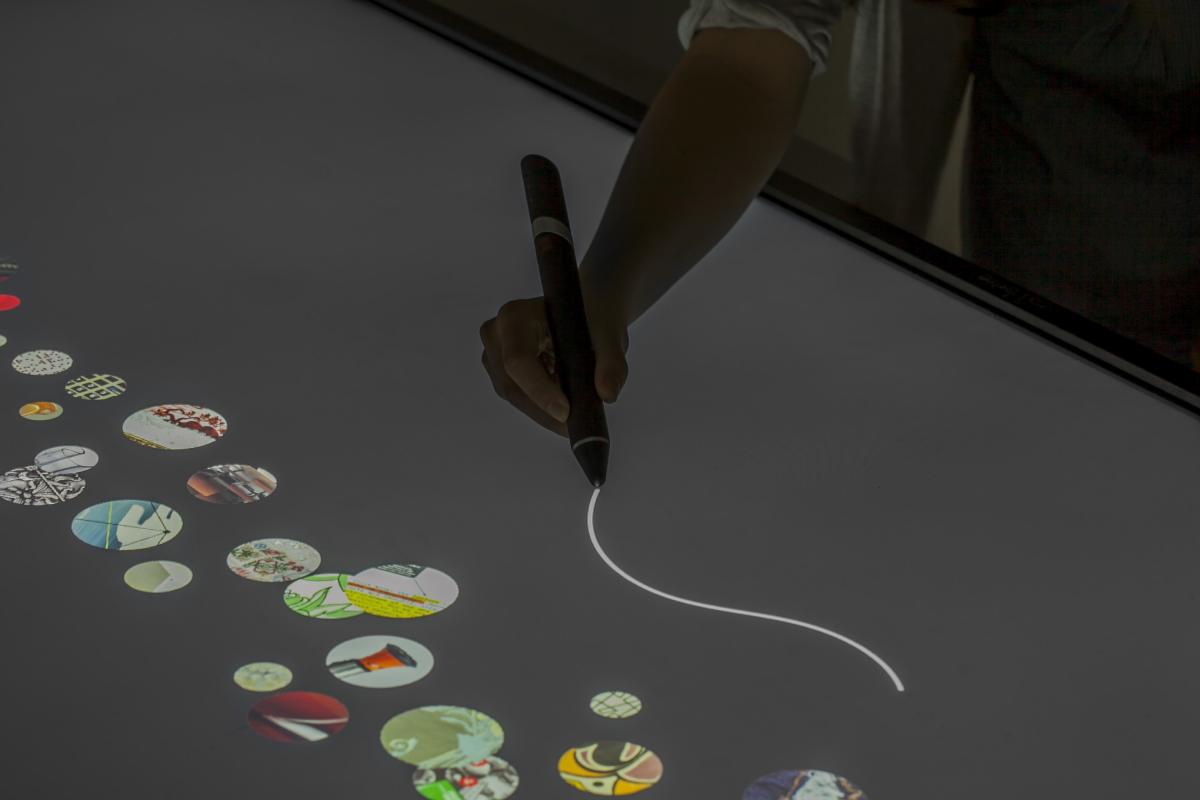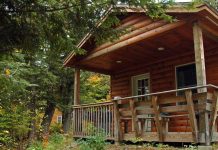December 9, 2014

Katherine Roth, The Associated Press, December 9, 2014
NEW YORK (AP) — The Cooper Hewitt, Smithsonian Design Museum, revamped, restored and expanded after a three-year closure, is reopening at last, all decked out for the 21st century in its historic Carnegie Mansion home just a few blocks up Fifth Avenue from the Guggenheim and the Metropolitan Museum of Art.
Visitors to the museum, which reopens Friday (Dec. 12), will be hard-pressed to recognize the old-fashioned, somewhat wonky entity of old. It’s now four stories of cutting-edge galleries, hands-on and community-friendly.
The spacious garden, adjoining cafe and gift shop, housed in Andrew Carnegie’s 19th century picture gallery, will be accessible from a 90th Street gate and open to the public at no charge.
Inside, ticket-holders should come ready to experience a new kind of museum straddling art and science, 19th-century architecture and a 21st-century Jetsons sort of world, where 3-D designs can be downloaded and hundreds of wallpaper patterns can be viewed (or designed) at the touch of a finger. Visitors are invited to use the museum as a practical design resource and exploration center as much as a museum in the traditional sense.
“I can’t wait to see how people make use of this,” said museum director Caroline Baumann, stepping gingerly around multi-touch surfaces the size of billiard tables, contemporary design pieces and even some antique French furniture. “It really makes the heart soar.”
With 60 percent more gallery space than it had before, the Cooper Hewitt opens with 10 new shows at once, making use of all four floors.
On the ground floor, “Designing the New Cooper Hewitt” recounts the museum’s transformation, which involved 12 design teams and took a decade to realize.
The first floor features a “Process Lab” with an industrial-size 3-D printer, among other tools. The lab invites visitors to explore the process of problem-solving behind design.
A “Beautiful Users” exhibit includes pitchers, wheelchairs and other objects from daily life, examining the shift toward user-oriented design.
A quick climb up one more staircase and the juxtaposition of traditional and cutting-edge really starts to take flight. “Making Design” brings together a wide range of works from the museum’s permanent collection, while “Hewitt Sisters Collect” tells the story of Eleanor and Sarah Hewitt and their collections of textiles, hatboxes, wall coverings, furniture and even birdcages (notice the sound of chirping birds), among other decorative arts.
Elsewhere, an Immersion Room allows visitors access to the Cooper Hewitt’s extensive collection of wall coverings and projects them, full-scale, onto the walls.
The third floor, formerly closed to the public and now transformed into a 6,000-square-foot gallery, features the exhibit “Tools: Extending Our Reach.” Highlights include a walk-through installation composed of dozens of hammers, saws and other basic tools, suspended so they appear to be exploding, and a 24-hour, delayed live feed of the sun’s surface, courtesy of the Smithsonian Astrophysical Observatory in Cambridge, Massachusetts — an illustration of the power of complex tools like satellites and telescopes. The exhibit is reminiscent at times of what you might expect from a science museum.
The final elements of the museum’s transformation will be added this spring when seating and terraces are added to the garden, an “evolved version” of the 1902 original, and each museum visitor will be loaned an interactive “pen.”
The grippy black stylus, around 8 inches long, can be used to doodle or design on any of the generously sized multi-touch tables throughout the museum; to locate specific items in the collection (doodling a zigzag pattern, for example, brings up all items with a zigzag in their design); or to download background material.
A unique Web address on each entry ticket lets the visitor download material to be accessed later online.
As for the mansion itself, the detailed, teak-veneer parquet floors have been replaced by century-old teak in the same seven patterns that Carnegie installed. The Caldwell light fixtures — one of the earliest types of electrical lighting in the city — are gleaming again. And multiple layers of paint have been removed to reveal the ornately carved, Caen limestone, arched ceiling just inside the 91st Street entrance.
“This was one of the first homes in the world to have air conditioning, heating and an elevator system, really cutting-edge technologies of the time,” Baumann said. “Andrew Carnegie would be pleased if he could see it today.”
___
If You Go…
COOPER HEWITT, SMITHSONIAN DESIGN MUSEUM: 2 E. 91st St., near Fifth Avenue; http://www.cooperhewitt.org . Open daily starting Dec. 12 (except Christmas, New Year’s Day and Thanksgiving) 10 a.m.-6 p.m. daily and until 9 p.m. on Saturdays. Saturday evenings are “pay as you wish.” Adults, $18; seniors and students, $12; under 18, free. Garden free, open daily 7:30 a.m.-6 p.m. and until 9 p.m. Saturdays.
This article was written by KATHERINE ROTH from The Associated Press and was legally licensed through the NewsCred publisher network.
![]()
What do you think of this $type?
Powered by WPeMatico











